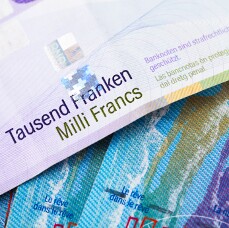The Swiss franc was either flat or lower against the majority of most-traded currencies today even though markets were under influence of uncertainty and risk aversion. Rather bad domestic macroeconomic data was not helping the currency of Switzerland at all.
The KOF Economic Barometer fell from 110.1 in September (revised, 113.8 before the revision) to 106.6 in October, below the median forecast of 107.9. It was the first decline after four consecutive months of gains. The report explained the drop:
The economic outlook for Switzerland is subdued in view of the pandemic situation and the restrictions that are likely to result from it.
Data from Switzerland’s Federal Statistical Office showed that retail sales rose by 0.3% in September, year-on-year, far less than analysts had predicted — 2.8%. On a monthly basis, the situation was much worse, with sales sinking by 3.6%.
In the near term, markets will be driven by the US presidential election on November 3 and the potential political turmoil, which may follow it, especially if the losing candidate goes to court challenging the outcome. And the rising number of COVID-19 cases will continue to affect markets both in the near term and further into the future. All that creates an environment of risk aversion that is usually beneficial to the Swiss currency. But lately, the US dollar was the preferred option for investors seeking safe haven, meaning that the Swissie may struggle to profit from the nervousness of market participants.
USD/CHF edged up from the open of 0.9154 to 0.9167 as of 19:47 GMT today, rebounding from the daily low of 0.9138. CHF/JPY was about flat at 114.17. The euro was very weak today despite a very good GDP report, and EUR/CHF dropped from the opening level of 1.0688 to 1.0681, retreating from the session high of 1.0702.
If you have any questions, comments, or opinions regarding the Swiss Franc, feel free to post them using the commentary form below.
